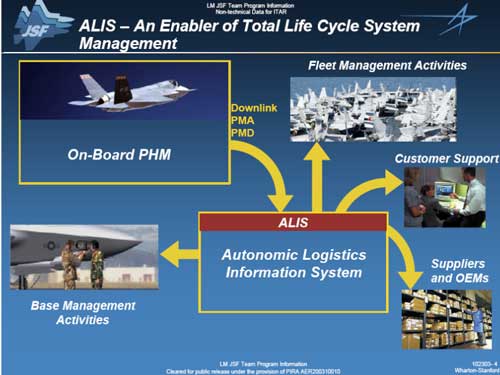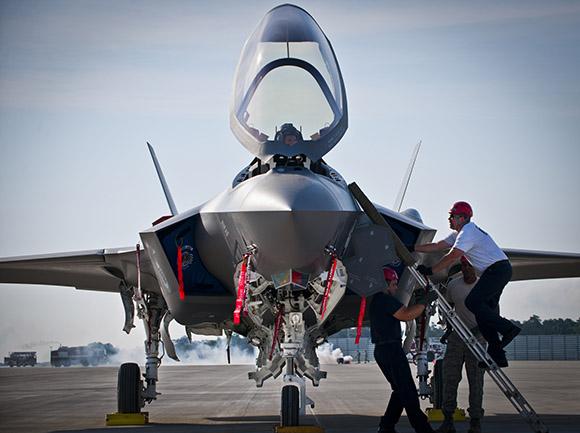Why does ALIS worry the Pentagon so much and how could it affect the already troubled development of the F-35? Let's try to explain it.
ALIS or Autonomic Logistics Information System is the nerve center of the F-35 system. Summing up to the max, ALIS allows pilots as well as ground supportive strength to take proactive actions to ensure the efficiency of the fighter in any operational theater.
ALIS is also called the backbone of the F-35 fleet. It is basically a hub used to plan missions, keep track of aircraft status, order spare parts. Unlike all the other aircraft, ALIS manages these operations daily, in a single hub in the world. All ALIS servers connect via land-based or satellite military networks. Obviously it does not use the internet. There is only one global server called Autonomic Logistics Operating Unit (ALOU). Each nation will have its own server, called Central Point of Entry (CPE). In turn, squadrons use a called server locally Standard Operating Unit (SOU).
ALIS function in this way: the F-35 of a country X connects to the SOU that interfaces with the CPE. The latter stores the data and transmits the information to theAutonomic Logistics Operating Unit. Therefore, an optimal connection is essential.

Each aircraft can "lose" the connection to its national server for up to 30 days. After this time, the fighter must be grounded. Once the connection is established, the SOU loads the data into the CPE. So there will be as many servers as there will be countries that will buy the F-35, but only one main hub in the world.
ALIS has never been designed with a back-up system. Fears therefore arise (in addition to the current instability of the system) for particular contexts in which energy losses could occur. This could limit fleet operations to 30 days from the last connection. Although designed exclusively in primary form, ALIS should guarantee greater redundancy to the infrastructure (in a few years). However, in the event that ALIS should be offline, F-35 will be able to fly for no more than 30 days.
ALIS does not restrict flight operations, but makes ground crews blind to the actual state of the aircraft. Self offline, ground crews should do nothing but physically proceed, managing the entire supply chain of the fighter, as well as configuration, error diagnostics, mission planning and debriefing.

(photo: US Air Force / Lockheed Martin)












